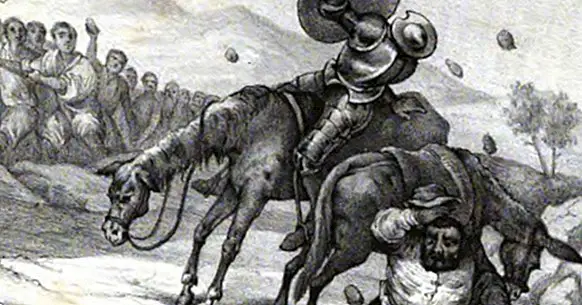The 6 types of narrators, and how they are used in literature
When it comes to telling stories, whether real or fictional, not only does it matter how the world is described and the events that occur in it. The way in which the figure of the narrator is used is also crucial, even when it seems that this is not part of the narrative itself.
In this article we will see what they are the main types of narrators in the different works of literature that explain stories, and in which way to choose one or the other has an effect on the psychological impact that these works cause.
- Related article: "The 16 types of books that exist (according to different criteria)"
The different types of narrators, and their characteristics
Human beings are characterized, among other things, by creating stories, stories. These stories go far beyond the world of leisure, as one might think if, having in mind the concept of what literature is, we should only concentrate on the best-selling novels. They offer a way to interpret reality .
Thus, to stop to know better what are the main types of narrator is not a frivolity, since this choice is part of the creative process of explaining something. Each of them gives a different whole to the story. Let's see a classification of these categories when narrating, going from first-person narrators to second-person narratives, finally reaching third-person narrators.
- Maybe you're interested: "The 8 differences between a story and a novel"
1. Narrator in the first person
This type of narrator is very common, and serves to print a realistic and experiential tone to the story that is narrated. Be supposed to the person who tells us the story was there when everything happened , so that we assume that the universe in which it occurs is the same as the one in which the narrator is present, so that it is subject to the same rules, approximately.
In addition, the fact that everything is narrated in first person allows us to have more information about this character, that although it does not have to be the protagonist, it usually has importance in history, even if it is to help build the rest of characters through the interaction of the first with the seconds, seeing how their personalities affect each other .
In turn, this category can be divided into other types of narrators. They are the following.
1.1. Witness Narrator
In these cases, the character who has the role of narrator does not act as a protagonist, but as a person close to the protagonist and who attends the main events that articulate the story.
He is a type of narrator very useful when you want to show the personality of the protagonist , as well as his personal evolution and his narrative arc, in a subtle way, suggesting more than describing in a direct way, since one does not have access to the real thoughts of that character. However, it is also possible to adopt a more impersonal style, as if everything were composed of reports.
Examples of this type of narrator are John Watson in the novels of Sherlock Holmes or Nick Carraway in The Great Gatsby.
1.2. Narrator protagonist
This is probably the most popular and used type of first-person narrator, since it is also one of the most intuitive and simple: the story is explained from the point of view of the person who must go through the main plot arc of the story , just as we would in real life if we explained something that has happened to us .
However, when using this resource it is possible to use many nuances. For example, narrating talking about what is happening in the present allows the audience to be immersed in the story.
1.3. Narrator in flow of thoughts
This is a type of narrator very little used, since it tries to describe literally the thoughts of someone, just as they emerge to consciousness . Therefore, all is explained in real time, the present being the reference moment.
The different narrators of The noise and the fury, by William Faulkner, are an example of this.
2. Narrator in the second person
This type of narrator is characterized by explaining a story to a specific person. It can be presented in epistolary format, as if everything were composed of letters oriented to a recipient, or as if it were a real dialogue in which basically one speaks and the other listens, sometimes making you see that you answer questions asked by the listener .
3. Narrator in the third person
Finally, in the narrator in the third person, who tells us the story is characterized by not participate at all, or participate as little as possible, in the course of history . It can be divided into two categories.
3.1. Omniscient narrator
One of the most used narrator types.It is spoken from the point of view of an entity completely alien to the plane of reality in which everything that is explained occurs, as if it were a kind of god who has access to all the information at once, even to the mental states of all the characters , directly.
Keep in mind that although you can describe reliably what each character thinks and feels, for issues related to the coherence and quality of the narrative, you avoid going from one mind to another in a chaotic way, and instead from that it is chosen to focus the focus of attention on a character and what happens around him.
The novel Champion's breakfast, by Kurt Vonnegut, combines this type of narration with that of witness narrator, for example. Something similar happens in Fog, by Miguel de Unamuno.
3.2. Observer narrator
It is similar to the previous one, but in this case you do not have direct access to all the information of what happens. But nevertheless, the narrator gets involved as little as possible in what happens , both physically and psychologically. Try to be neutral and objective.



















